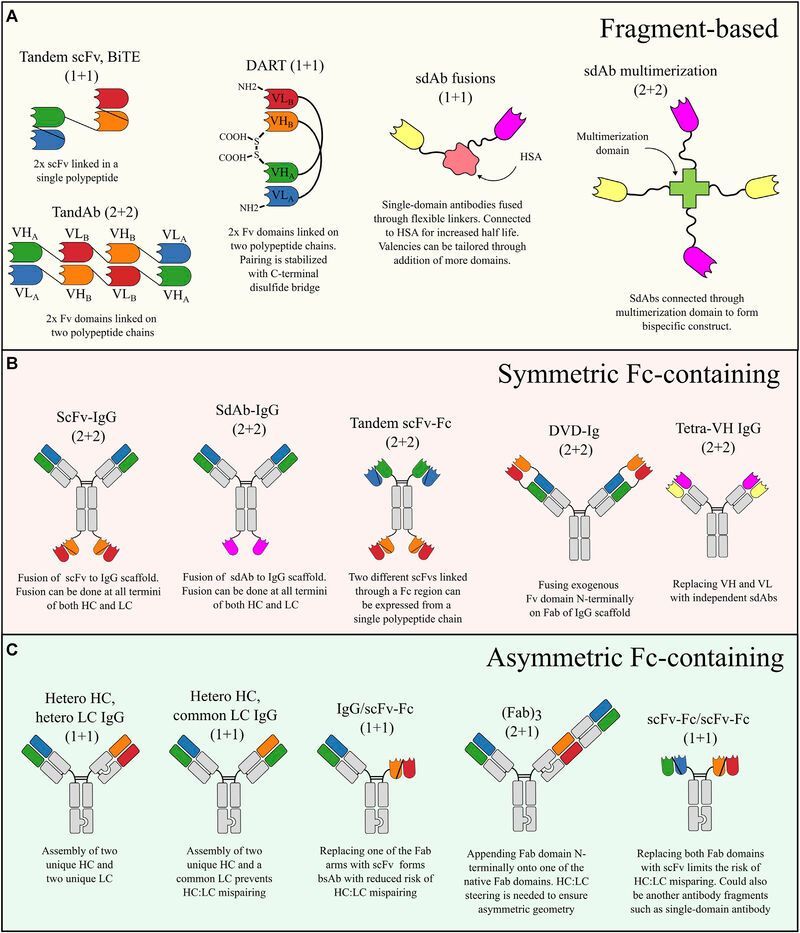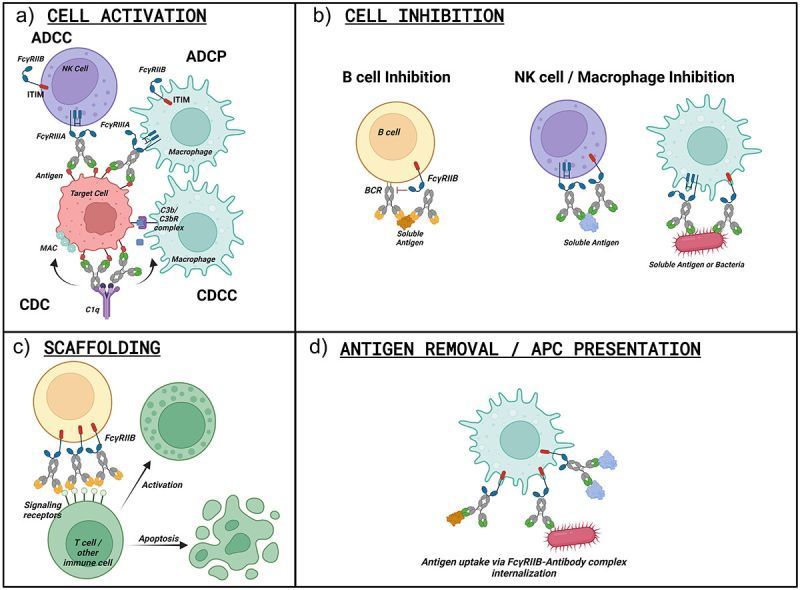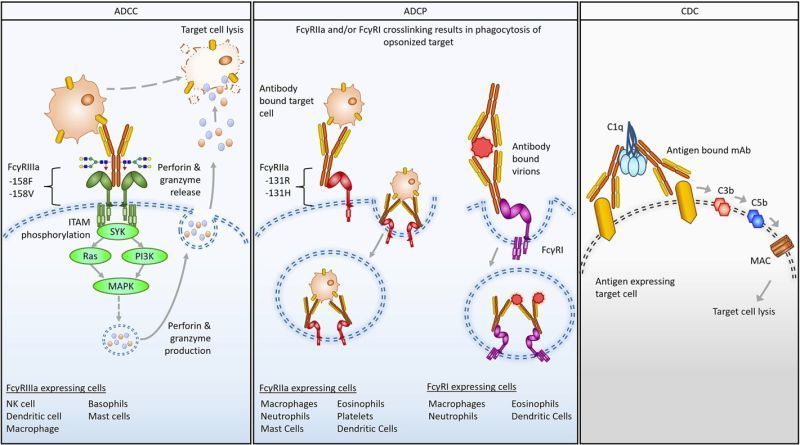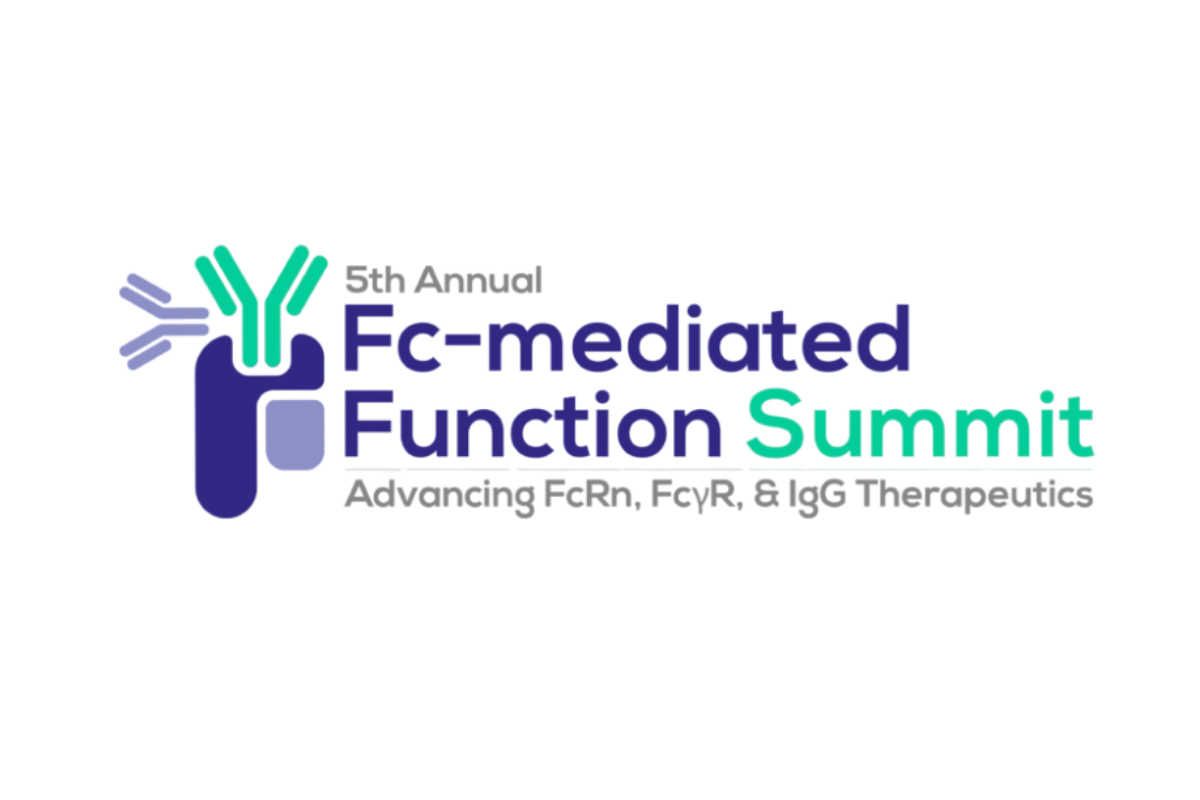Job Opportunities
May 28, 2025
Current Job Openings
We have no current job postings.

The Fc Review: How does Fc engineering shape bispecific antibody function? A Frontiers in Bioengineering and Biotechnology review explores how the Fc region can be tuned to control effector function, half-life, and safety, key levers in the design of next-generation bispecific antibodies ( bsAbs ). Background: Bispecific antibodies bring new therapeutic possibilities by engaging multiple targets at once. But this complexity also brings new challenges, from unwanted immune activation to altered pharmacokinetics . The Fc region plays a central role here, acting as both a stabilizing scaffold and a regulator of immune effector engagement

Abstract: Fc engineering to enhance antibody effector functions harbors the potential to improve therapeutic effects. Understanding FcγR expression and distribution in the tumor microenvironment prior to and following treatment may help guide immune-engaging antibody design and patient stratification. In this study, we investigated FcR-expressing immune effector cells in HER2 + and triple-negative breast cancers (TNBC), including neoadjuvant chemotherapy–resistant disease. FcγRIIIa expression, FcγRIIIa + NK cells, and classically activated (M1-like) macrophages correlated with improved anti-HER2 antibody efficacy. FcγRIIIa protein and FcγRIIIa + NK cells and macrophages were present in primary TNBC and retained in treatment-resistant tumors.

Background Authorized COVID-19 vaccines require boosters for continued protection; however, the lack of crossplatform compatible boosters creates practical challenges to keeping populations protected. Methods This Phase 3, multicenter, international, randomized, active-controlled trial compared UB-612 as a thirddose heterologous booster to BNT162b2, ChAdOx1-S, or BBIBP-CorV homologous boosters in healthy subjects aged ≥16 years. Participants were randomly assigned 1:1 to receive a single intramuscular injection of UB-612 or an active comparator matching the primary dose, and were stratified for age, sex, N-protein seropositivity, and time since the last dose of their primary series COVID-19 vaccination. The primary objective was to show noninferiority of neutralizing antibody geometric mean titer (GMT) against live SARS-CoV-2 Wuhan strain after boosting with UB-612 or each of the licensed platform vaccines. Secondary and exploratory objectives covered short and long-term antibody responses. The safety analysis addressed subject and investigator reported adverse events. The study was registered on ClinicalTrials.gov, NCT05293665, and completed on September 12, 2023.

The Fc Review: Continuing our series taking a closer look at recent Fc-focused papers, what they found, and why it matters for antibody discovery and development. How does Fc engineering shape the translation of antibodies from preclinical models to the clinic? A new industry-wide review with 15 case studies examines the impact of Fc modifications on pharmacology and safety, and the challenges of predicting human outcomes from nonclinical studies. Background: Fc regions do not only extend half-life, they drive functions like ADCC , ADCP, CDC, and immune modulation. Engineering the Fc can enhance, silence, or redirect these activities. But the same changes that deliver potency can also introduce risk, especially when preclinical models do not fully mirror human Fc receptor biology.

The Fc Review: Kicking off a new series where we take a closer look at recent Fc-focused papers. What they found, and why it matters for antibody discovery and development. How much does FcγR genetic variation influence an antibody’s function? A recent FDA review examines the often-overlooked role of Fcγ receptor (FcγR) polymorphisms in shaping therapeutic antibody activity, and the implications for the assays used to measure it. Background: FcγRs are the “effector arm” connection between antibodies and immune cells, driving processes like ADCC and ADCP. Genetic variation in these receptors can alter binding strength, modulate effector function, and impact clinical outcomes. Understanding this interplay is important for therapeutic design, potency assessment, and patient response prediction.
Journal Abstract: Antibodies targeting the malaria circumsporozoite protein (CSP) can prophylactically protect against malaria by targeting Plasmodium parasites before they establish symptomatic blood-stage disease. Engineering the antibody Fc region to more effectively engage immune effector functions has produced therapeutic antibodies with enhanced potency against viral and oncological targets. However, whether Fc-dependent immune effector functions can contribute to the protection of malaria CSP mAbs or be further enhanced via engineering has been limitedly tested. Here, we report that Fc-dependent effector functions are required for achieving maximal protection via prophylactic treatment with the CSP mAb 317. We further report that Fc engineering modulated the activity of multiple CSP mAbs in multiple in vitro assays of effector function. Our studies revealed that the mAbs L9 and CIS43 were more potent drivers of antibody-dependent phagocytosis, NK activation and killing, and complement deposition. In contrast, 317, but not L9 and CIS43, drove enhanced activation of CSP-responsive T-cells after DC acquisition of mAb-complexed antigens. Collectively, our data suggest that effector function represents an important mechanism of anti-CSP antibodies with the potential to enhance activity through Fc engineering.
Authors: Kaplonek P, et al. Sci Transl Med. 2022 May 18;14(645):eabm2311.





